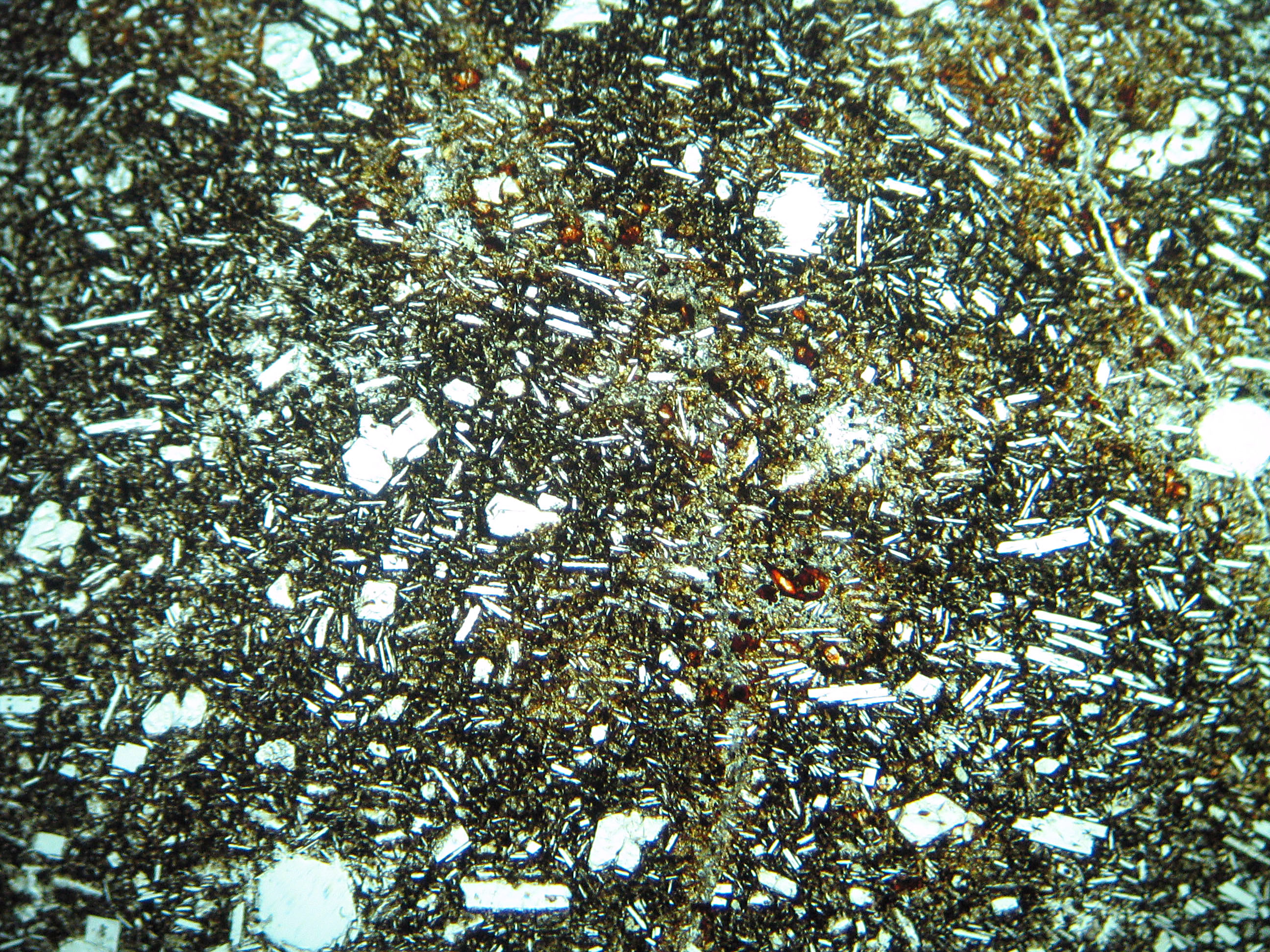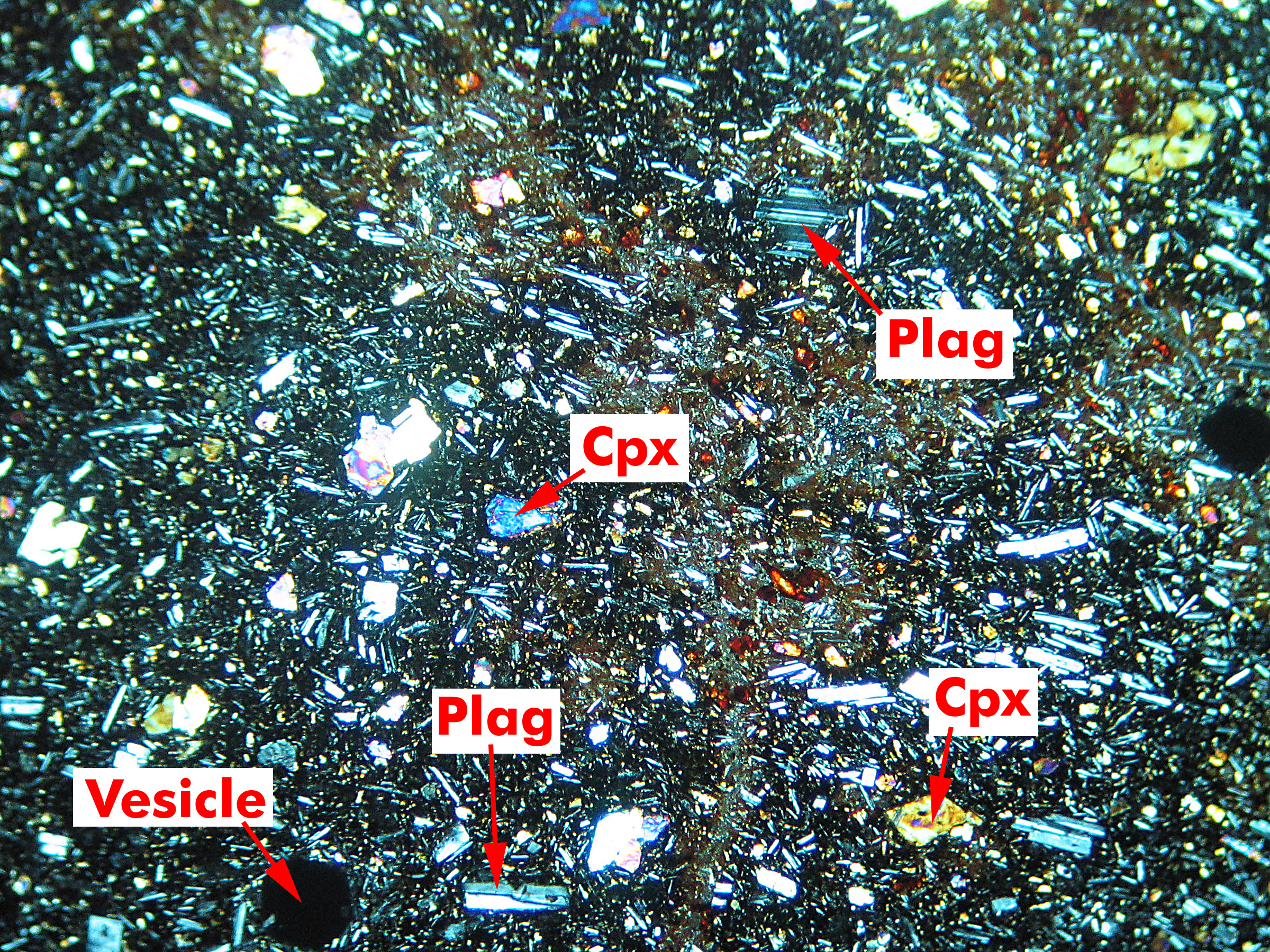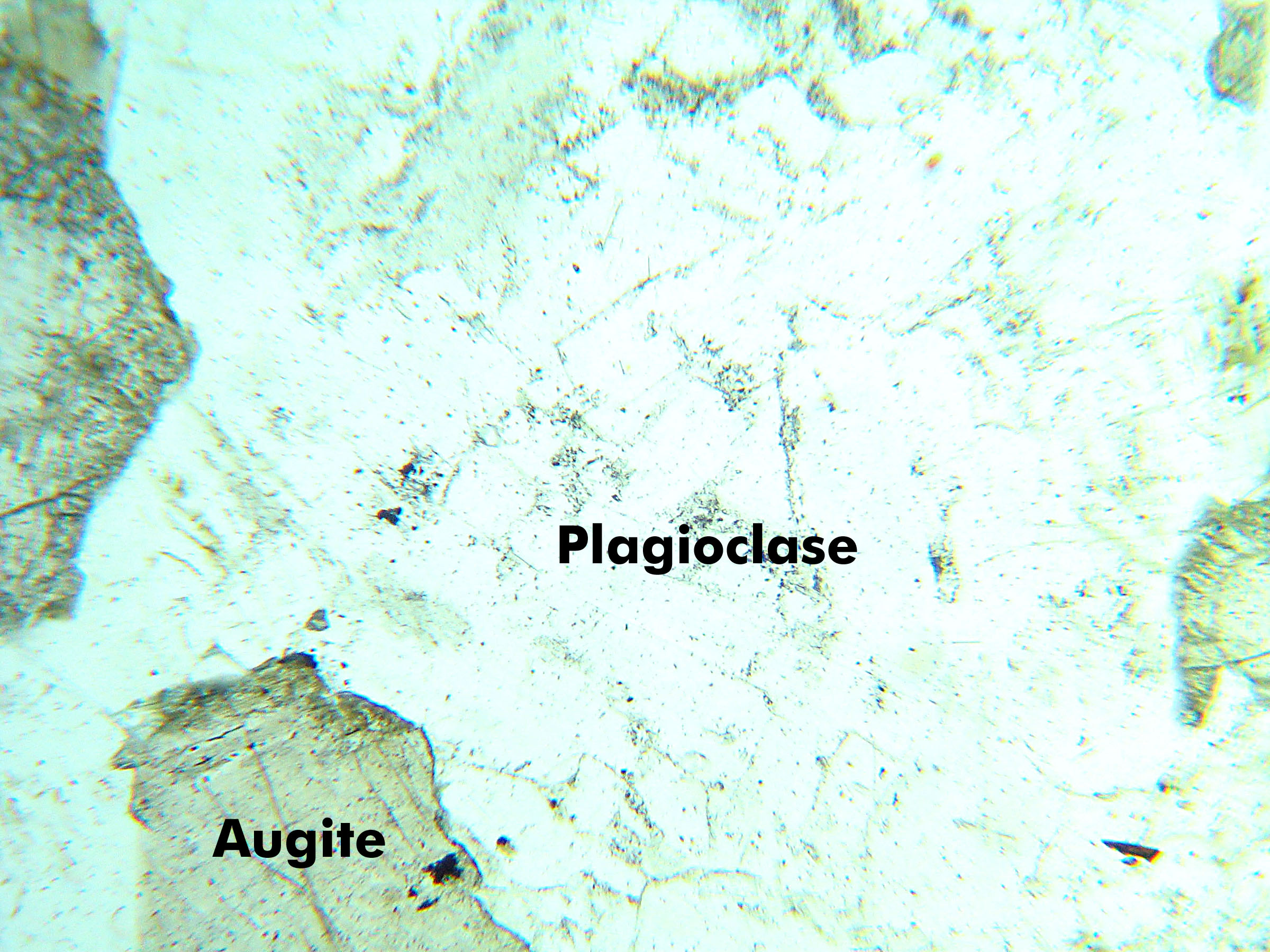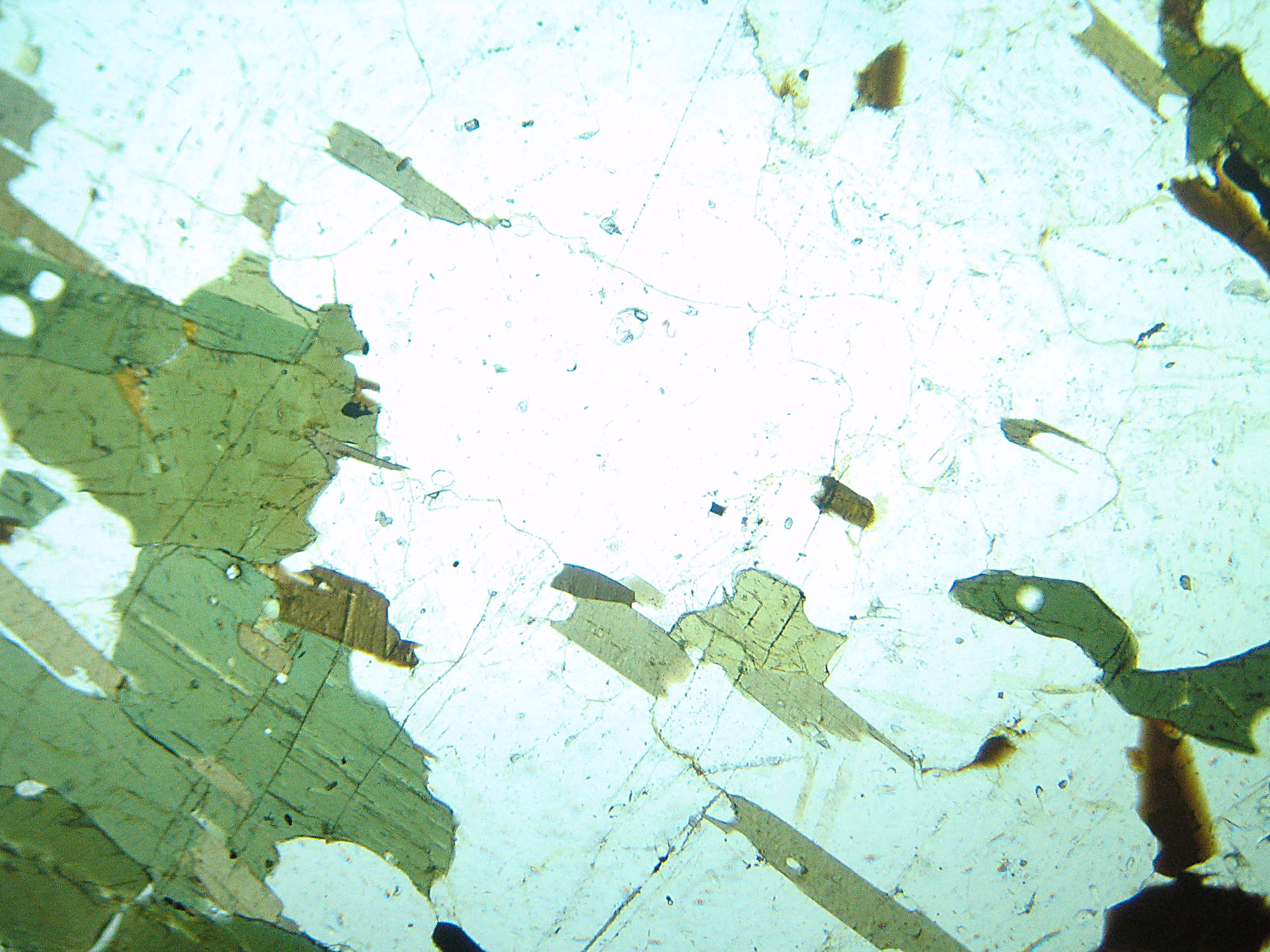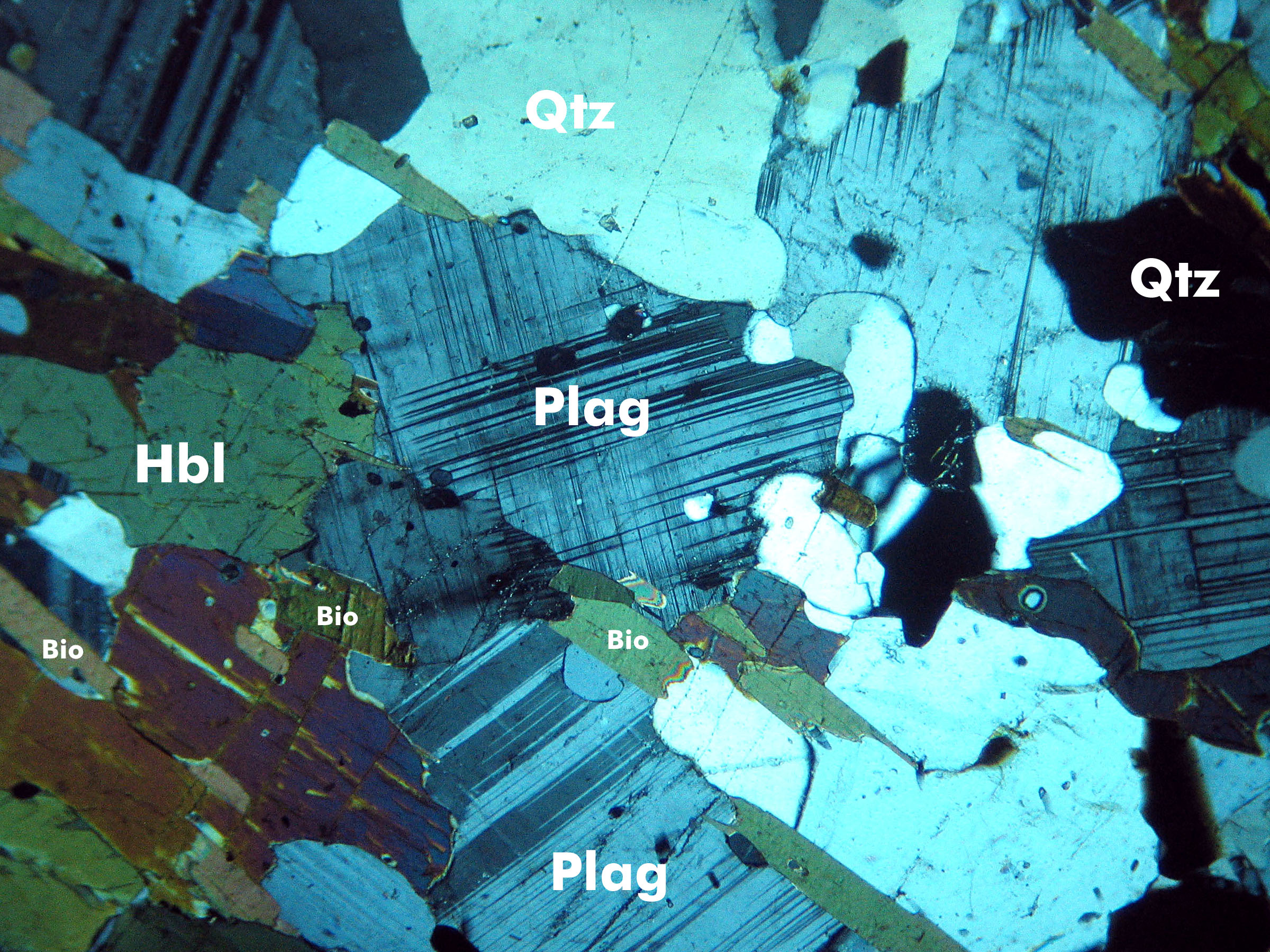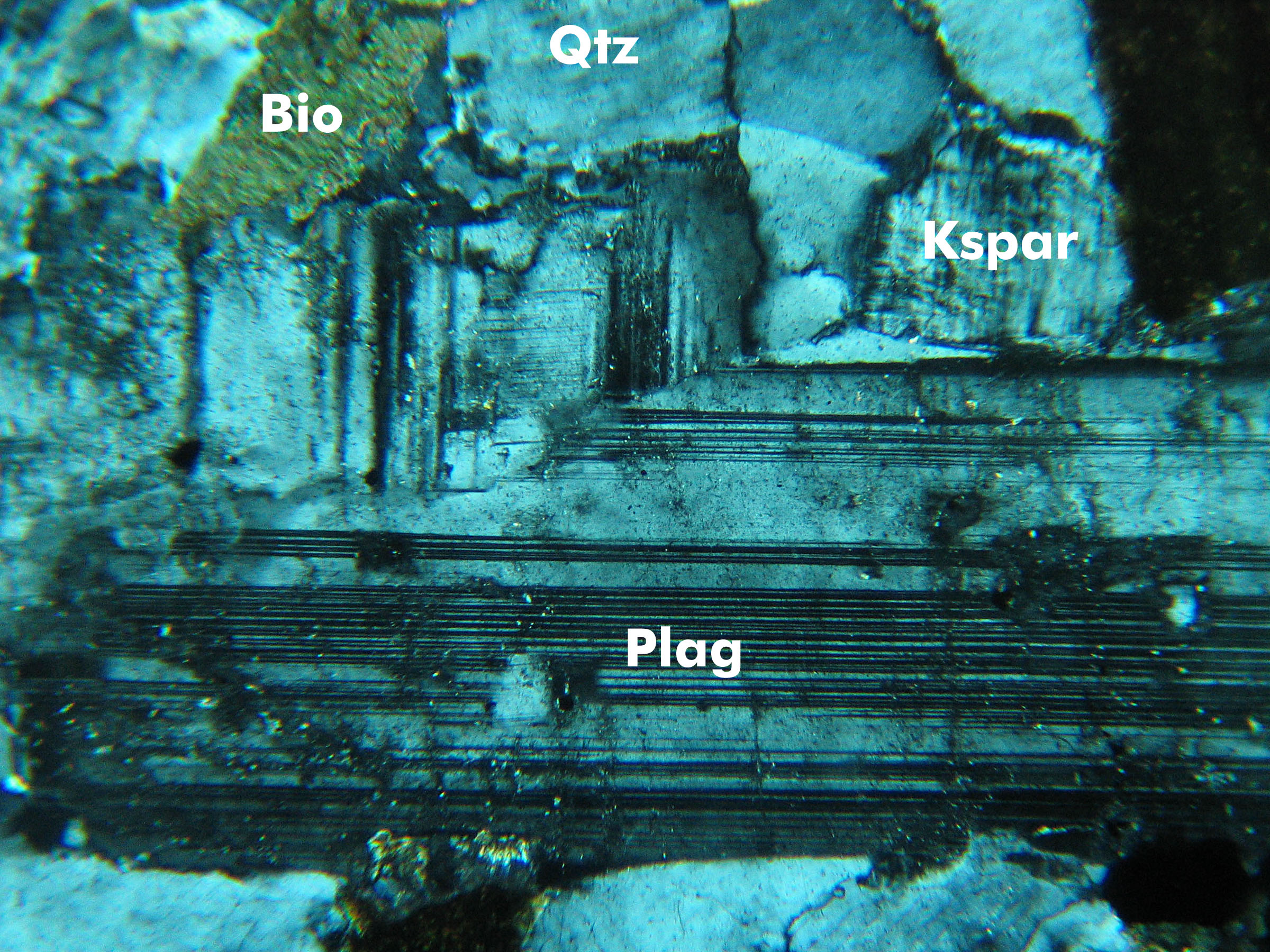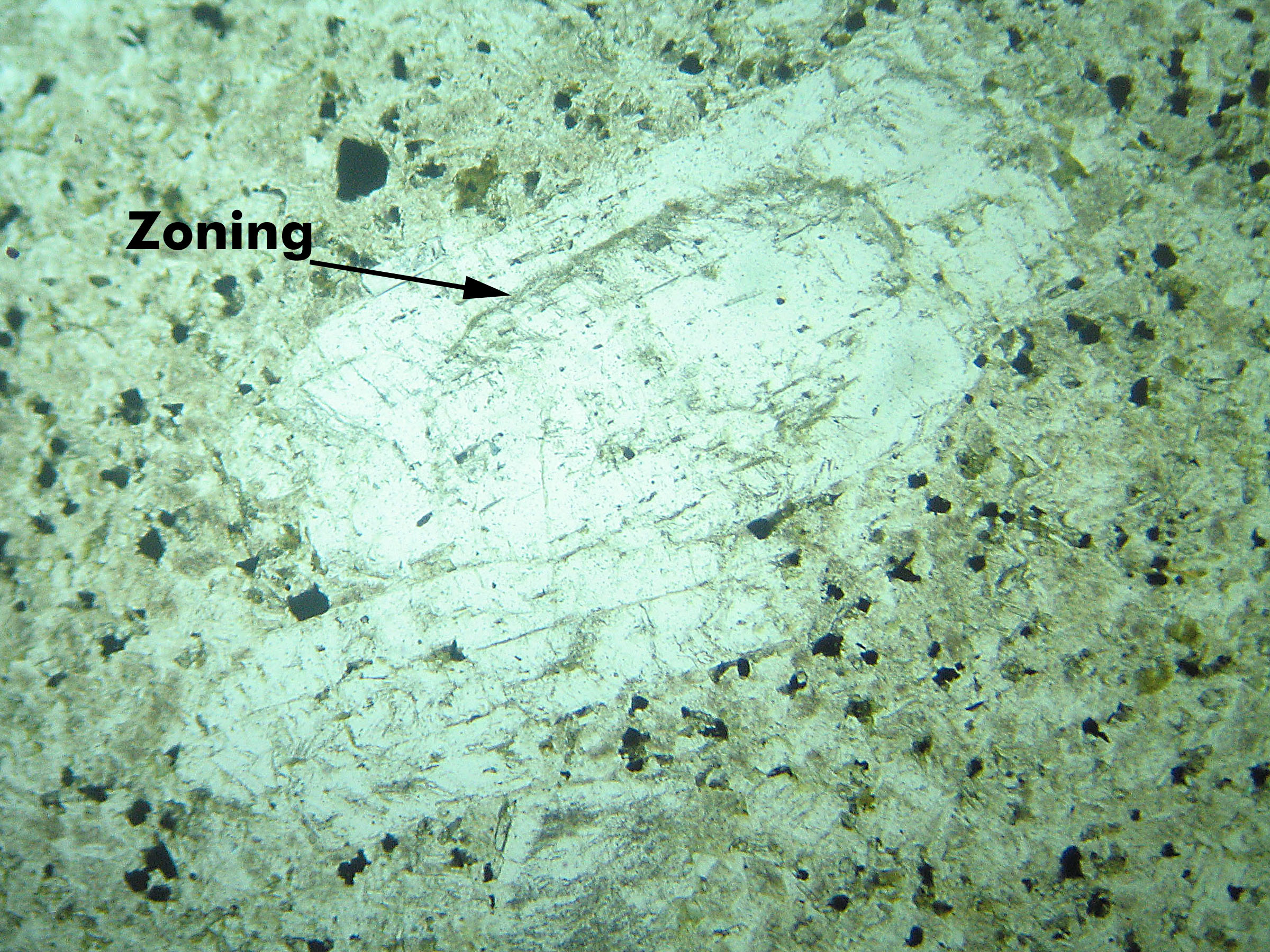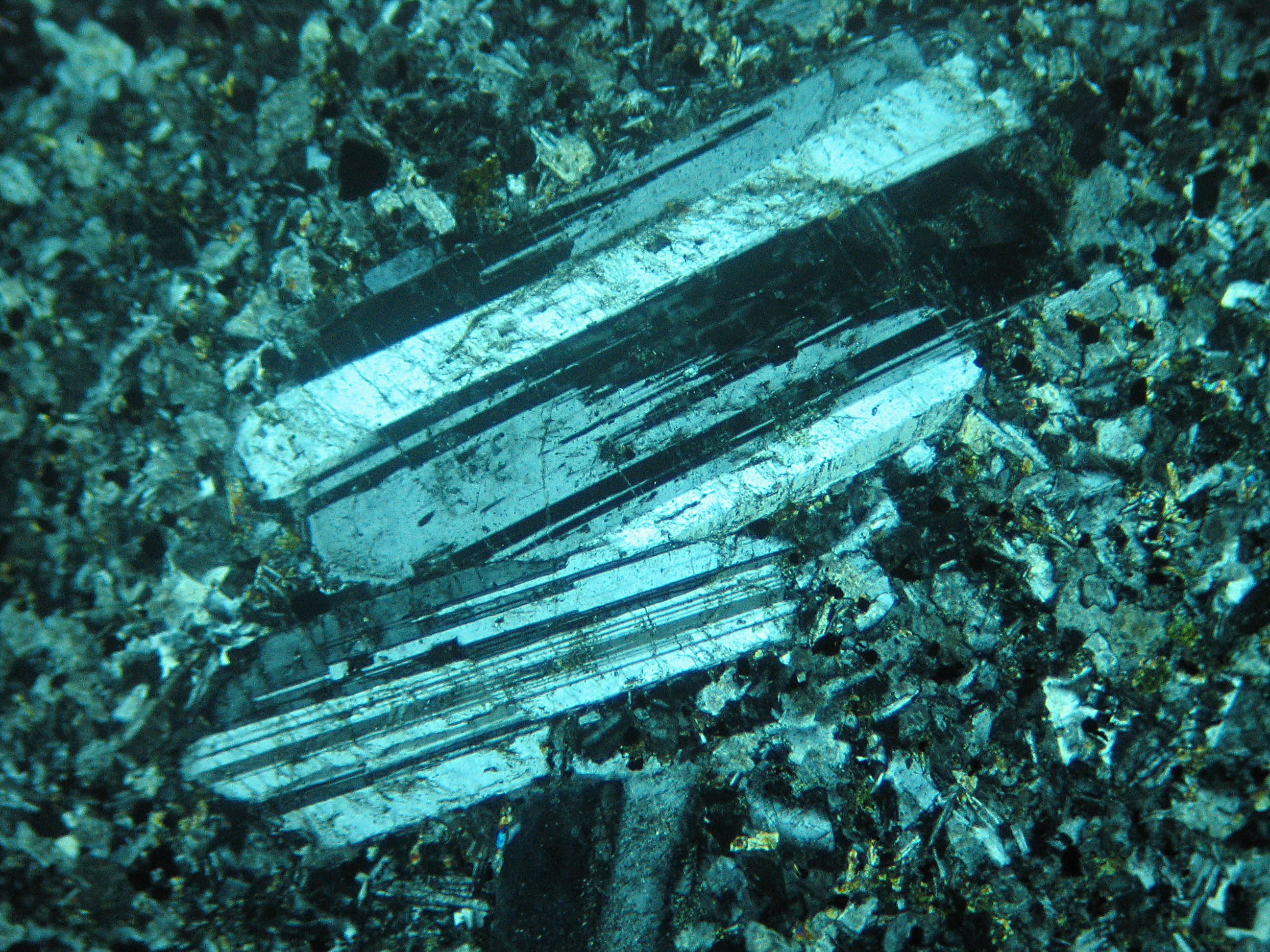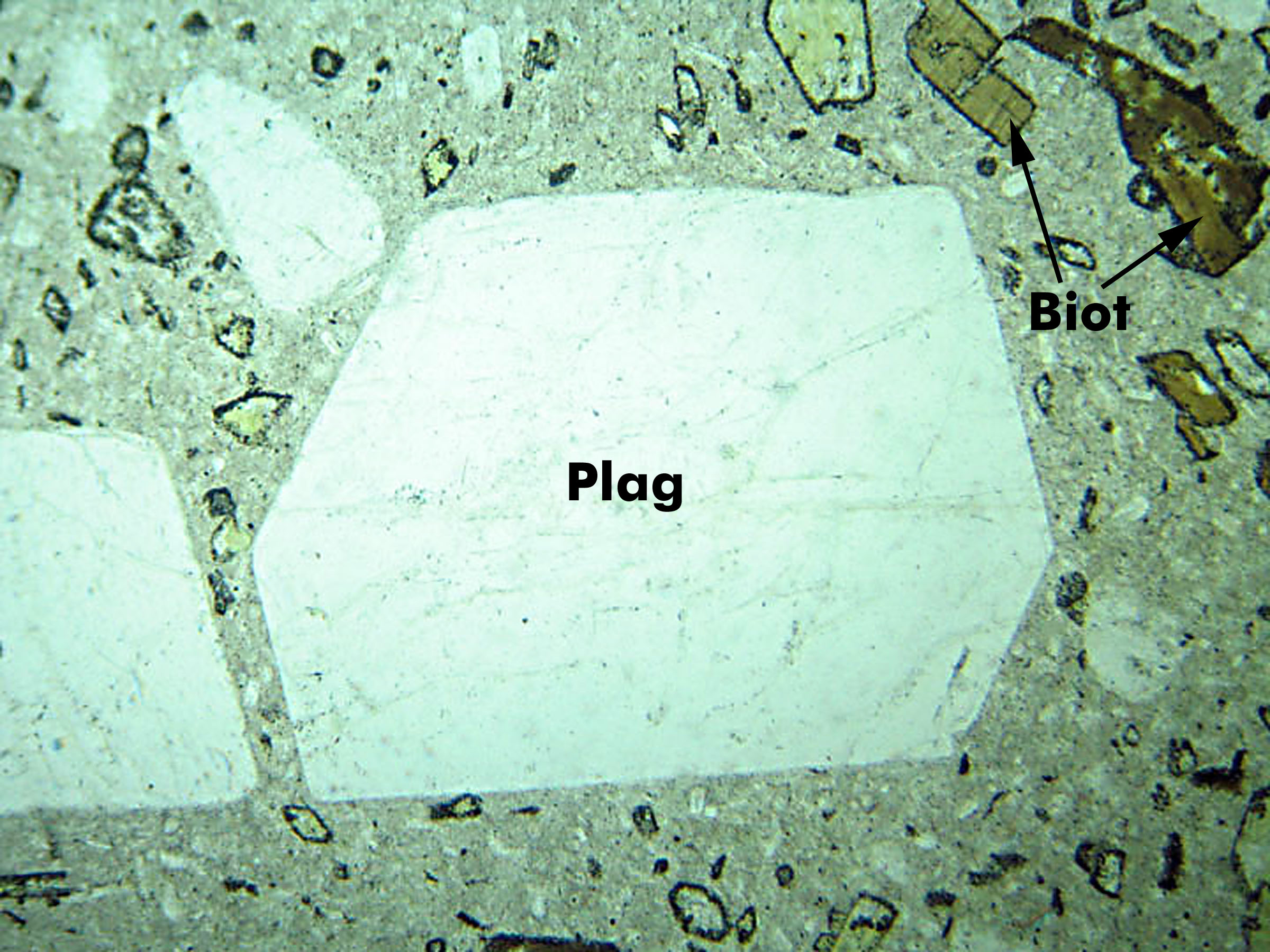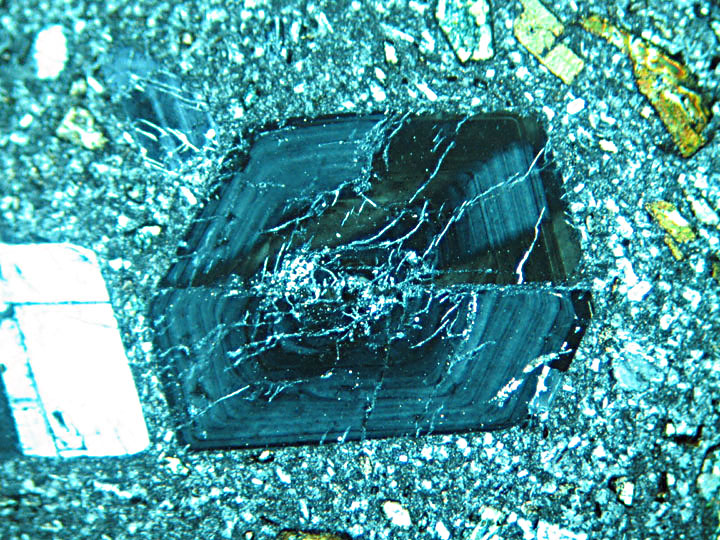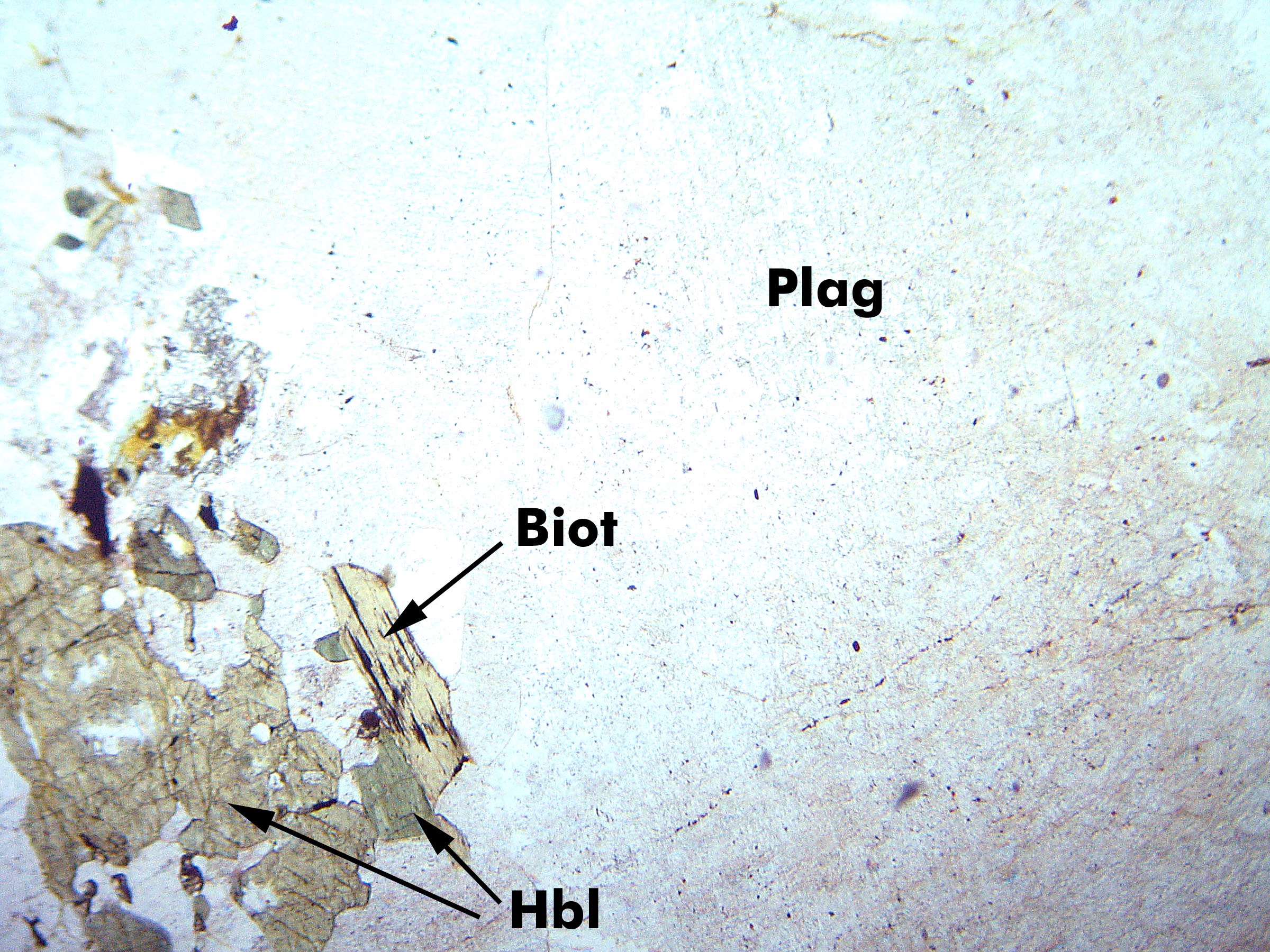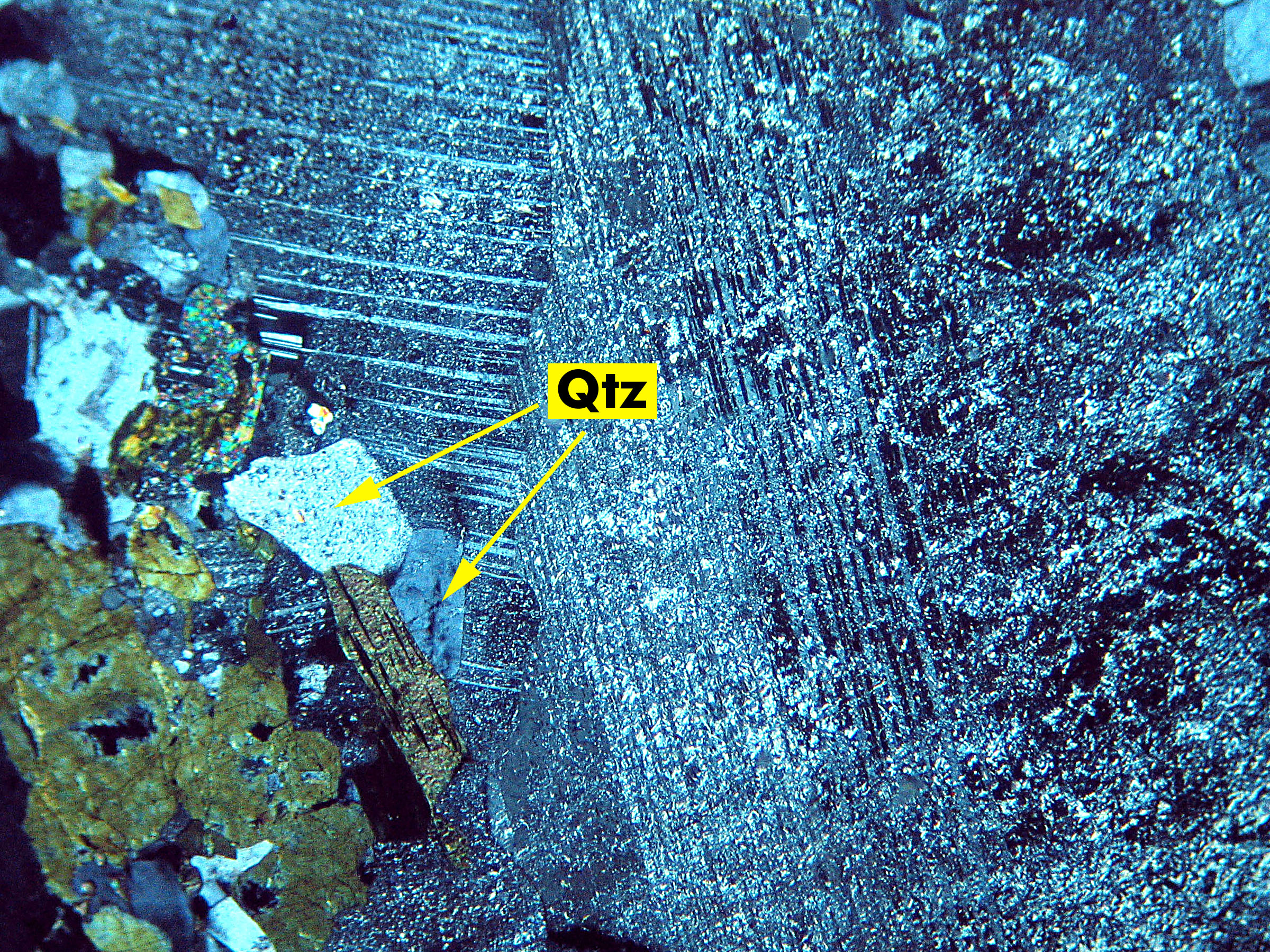|
Plagioclase
Occurrence
|
Plagioclase (a feldspar) is widespread and
common in a wide variety of igneous and metamorphic rocks and,
to a much lesser extent, in some immature sedimentary rocks. |
Composition
The most significant end members are:
·anorthite, CaAl2Si2O8
·albite, NaAlSi3O8 |
Identification
|
In general, keys to identifying plagioclase
are its (lack of) color, its low birefreingence, and its twinning. When untwinned, plagioclase
has bland features and may be difficult to identify unambiguously. |
Important properties
|
·Color
- colorless, but may be altered giving it a grainy or grayish
appearance in PP light. |
|
·Interference
colors - birefringence
is low, typically only white to gray interference
colors, but occasionally first order yellow. |
|
·Twinning
common - may twin in a variety
of ways. Twins are visible under XP
light. Most diagnostic are polysynthetic
twins giving a zebra stripe appearance. Less commonly, twins are "simple
twins" resulting in only two twin domains in a grain,
or are more complex, yielding stripes that go in different directions
within a single grain. |
|
·Intergrowths - Na-rich
plagioclase may be intergrown with K-feldspar
(microcline or orthoclase) creating a compound grain termed perthite. |
|
·Appearance and habit
- generally low to moderate relief;
subhedral to anhedral crystals. May be euhedral in volcanics.
Plates and lathes common in igneous rocks. Cross sections may
appear rectangular and may show compositional zoning (XP). Two
cleavages, but cleavage
is often not well developed. |
|
·Interference figure - biaxial
(- or +), large 2V. |
Similar minerals
|
·Plagioclase may be confused
with quartz, but quartz lacks cleavage,
lacks twinning, does not alter, exhibits
undulatory extinction, and is uniaxial. |
|
·K-feldspar
(sanidine, orthoclase or microcline) can be difficult to distinguish
from plagioclase. None of the K-feldspars
develop polysynthetic twins, but sanidine
and orthoclase both may show simple twinning
similar to plagioclase. Microcline often shows distinctive "tartan plaid" twinning, but
plagioclase may have two sets of twins
yielding a similar appearance. In plagioclase, the contacts between
twins tend to be sharp, while in microcline
they are not. |
|
·Cordierite
may exhibit twinning similar to plagioclase
but has slightly greater birefringence,
often contains pleochroic halos around
inclusions, and has poorer cleavage. |
|
